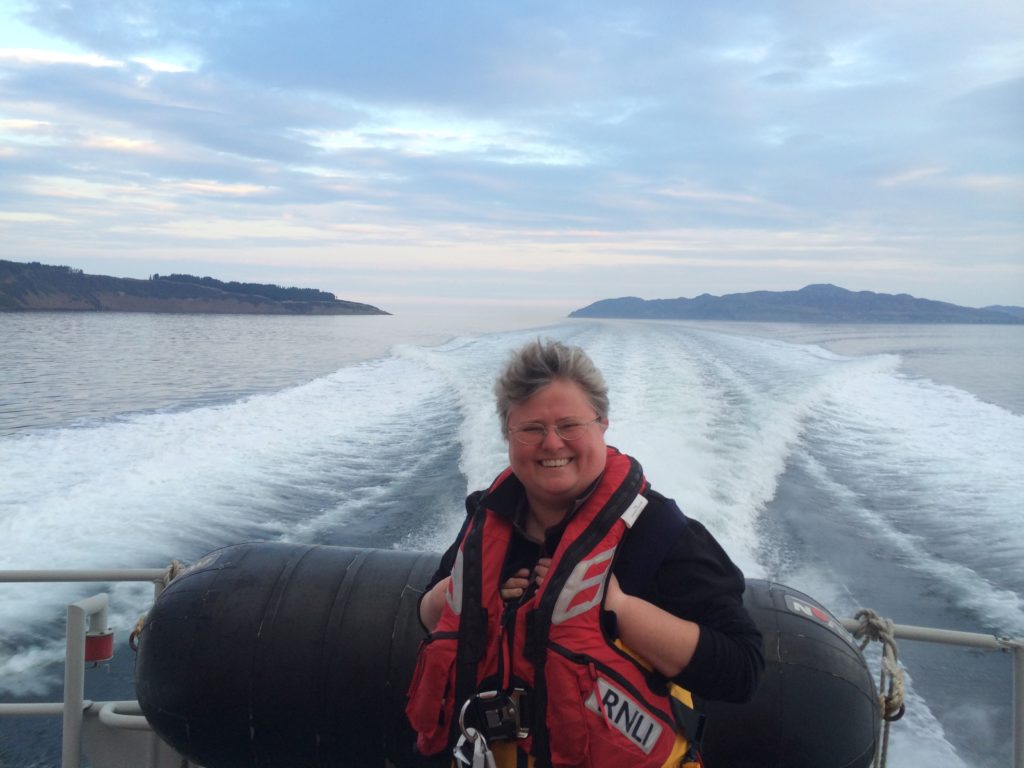On the bicentenary of the Royal National Lifeboat Institution, Sam Jones discusses her research into the charity’s history between 1849 and 1897.
The day that this blog post is being published marks the 200 year anniversary of the foundation of the Royal National Lifeboat Institution or the RNLI, the charity which operates a lifeboat service around the coasts of the UK and Ireland as well as some rivers, lochs and loughs. Its lifeboat crews are volunteers drawn from all walks of life. As an institution, the RNLI is woven into the very fabric of British and Irish life. And yet, despite the fact that it is celebrating its bicentenary this year, the RNLI has received scant academic or critical attention.
I am on the cusp of submitting my PhD thesis which covers a pivotal period in the RNLI’s history between 1849 and 1897 following nearly six years of part-time research as a remote distance learning maritime history PGR – very remote as I live on the Isle of Mull in the Hebrides off the west coast of Scotland. My journey back to academia dates back 14 years to when I first joined the RNLI as a volunteer crew member at Tobermory lifeboat station where I subsequently became a navigator on our all-weather lifeboat station and am now the station’s volunteer lifeboat operations manager.
I became interested in the RNLI’s history and I was struck by a few paragraphs in one of the popular histories of the charity which mentioned that by the late 1840s, the RNLI was in crisis but that its fortunes were turned around by a young 28 year old Welshman called Richard Lewis who became its secretary in 1850 until his death in 1883. He remains the RNLI’s longest serving secretary or what we would now refer to as chief executive. I wanted to know more than just a few paragraphs and so I began to undertake some independent research. In particular, I wanted to know how somebody who had been so important in the RNLI’s history and had not only helped to ensure its survival but was instrumental in laying the foundations of the modern RNLI had been largely ignored. However, before long I wanted to inject some academic rigor into my work. And despite the fact that I had previously been awarded a DPhil in socio-legal studies at the University of Oxford in 1992, I found myself talking to Dr Helen Doe, honorary research fellow at Exeter, at her home in Cornwall about a possible second PhD. Clearly memories of the sheer endurance and pain required to complete a doctorate had faded over the intervening 30 years. I was blessed at Oxford with a quite superb supervision team and in Dr Helen and Dr James Davey I have been twice blessed at Exeter. I cannot thank them enough for their support, guidance and inspiration. How has it been second time around? In some ways, very different. My DPhil was completed before the internet and I am still like a child in a sweet shop whenever I go onto the library website. This time I have also had to face not only the challenge of combining my research with a full on, full time job but also the small issue of a global pandemic which intruded two years in.
But what about my research itself? One of my key research questions is one which is frequently asked by people today: why is the lifeboat service in the UK and Ireland provided by a charity? I have been able to find government papers from the period which provide an extremely valuable insight into the relationship between the government and the RNLI during the period in which the RNLI received a state subsidy between 1854 and 1869. You might think that the government would have the upper hand, and it did try to control the RNLI’s activities, but Richard Lewis and his colleagues were very astute (some might say cunning) in the way in which they effectively managed the civil servants they dealt with. At one point, the government did consider nationalising the lifeboat service but quickly realised that it was such a huge undertaking that it was better to support the RNLI to expand its capability. Nevertheless, that period of state aid was essential in enabling the RNLI to have a truly national presence for the first time since its foundation in 1824.
On the day this blog is published, I will be at a thanksgiving service to mark the RNLI’s bicentenary at Westminster Abbey along with friends from my lifeboat family around the coasts of the UK and Ireland. I will have a photograph of a portrait of Richard Lewis with me because I think he deserves to be there and I will be forever grateful for those almost throwaway paragraphs in a popular history on the RNLI which set me on my PGR journey at Exeter.

Dr Sam Jones is in her sixth year of a part-time PhD in maritime history at the Centre for Maritime Historical Studies at the University of Exeter. She has an LLB in law from the London School of Economics (1989) and a DPhil in socio-legal studies from the University of Oxford (1992). Sam is also an RNLI volunteer, joining the lifeboat crew at Tobermory in 2010 where she is now the station’s volunteer lifeboat operations manager (one of the first women to hold the role in the RNLI). Sam is also a member of the RNLI’s Scottish Council.
